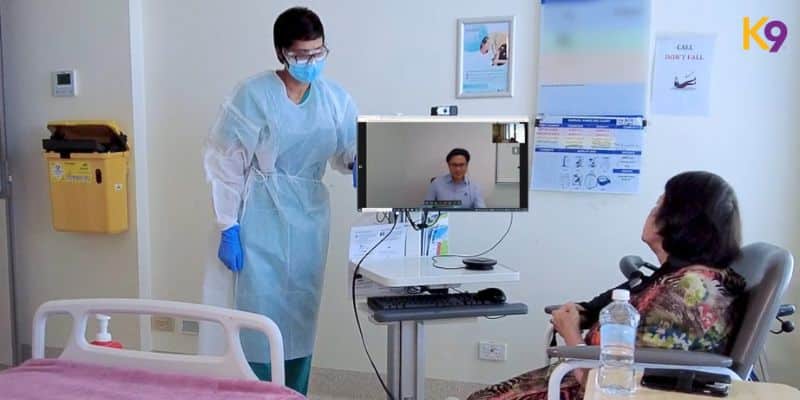The COVID-19 pandemic has changed the way we work and live. Remote work has become the norm for many people around the world. Telepresence technology has made remote work more accessible, efficient, and productive. This article will explore four ways telepresence has revolutionized remote work.
How Telepresence Has Revolutionized Remote Work
1. Telepresence Enables Virtual Meetings
High-quality audio and video can be used for virtual meetings thanks to telepresence technology. It allows people to work together remotely and across time zones. Due to the rise of remote employment during the pandemic, this technology has grown significantly.
The preferred tools for remote teams are telepresence platforms like Cisco Webex, Zoom, and Microsoft Teams. These platforms provide options, including screen sharing, virtual backdrops, and in-context document collaboration. They make it simple for individuals to communicate and collaborate, regardless of their location.
Virtual meetings have several advantages over in-person meetings:
- They save time and money on travel.
- They can be more inclusive, allowing people with disabilities or remote workers to participate.
- They can be recorded, allowing people to review the content later.
2. Telepresence Enables Remote Training
The application of telepresence technology has transformed remote training. Anyone in the world can use it to pick up new skills. Trainers can give excellent training programs to distant learners thanks to telepresence technology.
Several delivery methods, including live webinars, pre-recorded movies, and interactive e-learning courses, are available for virtual training programs. With the ability to access these programs from any location with an internet connection, it is simpler for consumers to integrate training into their hectic lives.
Telepresence technology has also enabled remote certification programs. These programs allow people to gain recognized qualifications without attending in-person classes. Remote certification programs are becoming increasingly popular, allowing people to advance their careers without taking time off work or relocating.
3. Telepresence Enables Remote Healthcare
Telepresence technology has significantly revolutionized remote healthcare. It makes it possible for patients to access healthcare wherever in the world. Due to people's reluctance to make in-person appointments during the pandemic, telemedicine services have grown in popularity.
Doctors and other healthcare experts can offer remote consultations, diagnoses, and treatments thanks to telemedicine services. Patients can use telemedicine services from anywhere with an internet connection, including their homes and offices. This technology has proven especially crucial for those residing in rural places or facing mobility challenges.
Telepresence technology has also enabled remote monitoring of patients. Wearable devices and remote sensors can collect patient health data and send it to healthcare professionals for analysis. This technology has the potential to improve patient outcomes and reduce healthcare costs.
4. Telepresence Enables Remote Collaboration
Telepresence technologies have transformed remote cooperation. People can collaborate on projects while working remotely. Since many people have been forced to work from home due to the pandemic, remote collaboration has become important.
Remote teams can collaborate in real-time using telepresence tools, including shared documents, video conferencing, and virtual whiteboards. These tools allow people to easily share ideas, collaborate on projects, and communicate efficiently. Technology has also enabled remote project management. Project management tools like Trello, Asana, and Jira enable remote teams to manage projects from start to finish. These tools allow team members to track progress, assign tasks, and communicate effectively.
Potential Future Developments of Telepresence
As telepresence technology continues to evolve, we can expect to see even more benefits for remote workers. Here are some potential future developments:
1.Telepresence Virtual Reality
Virtual reality (VR) technology has the potential to transform telepresence. VR headsets could enable remote workers to feel like they're in the same room as their colleagues.
This technology could be particularly useful for remote collaboration, enabling teams to work together on complex projects as if they were in the same location.
2. Robots
Robots with telepresence capabilities might make it possible for remote workers to be there physically. These robots might be operated remotely, enabling real-time communication with others. Robots with telepresence could be especially helpful in remote healthcare, allowing doctors to evaluate patients when they are miles away.
3. Telepresence Augmented Reality
Augmented reality (AR) technology, which projects digital data onto the real environment, could improve telepresence. Augmented reality technology can improve remote instruction by enabling students to interact with digital things in the real world.
Augmented reality (AR) technology could improve remote teamwork by enabling real-time data visualization and project participation.
4. Telepresence for Remote Manufacturing
Telepresence technology could be used to enable remote manufacturing. This technology could be used to control robots and machines in factories remotely. This could enable companies to reduce costs by outsourcing manufacturing to remote locations.
5. Challenges of Telepresence Technology
It's important to note that telepresence technology has its challenges. One of the main challenges of remote work is maintaining a sense of connection and community. Telepresence technology can help to address this challenge by enabling virtual meetings and remote collaboration, but remote teams need to make a concerted effort to stay connected.
Another challenge of telepresence technology is ensuring that it is accessible to everyone. Only some people can access high-speed internet or the latest telepresence tools, which can create inequalities in remote work. Companies need to be mindful of these inequalities and take steps to ensure that all employees have access to the tools and resources they need to succeed.
Finally, it's important to note that telepresence technology is not a panacea for all the challenges of remote work. Remote work can still be isolating and challenging, and companies must provide support and resources to remote workers. This can include regular check-ins with managers, virtual team-building activities, and access to mental health resources.
Conclusion
Telepresence technology has revolutionized remote work by enabling virtual meetings, remote training, remote healthcare, and remote collaboration. As telepresence technology continues to evolve, we can expect to see even more benefits for remote workers.





You must be logged in to post a comment.